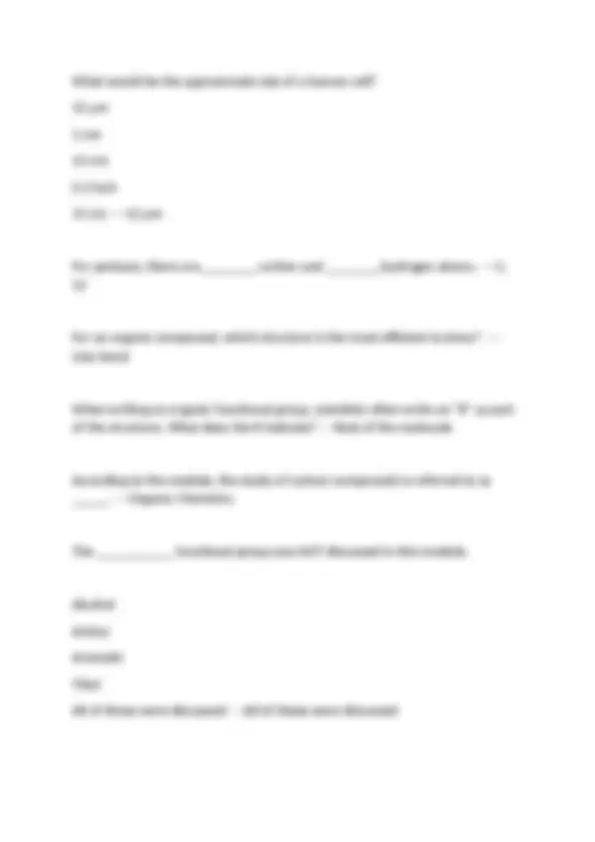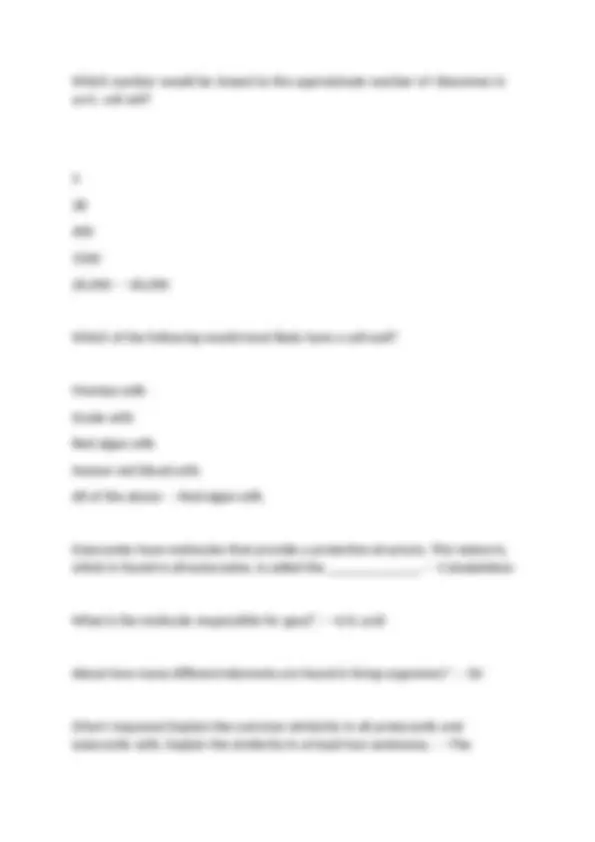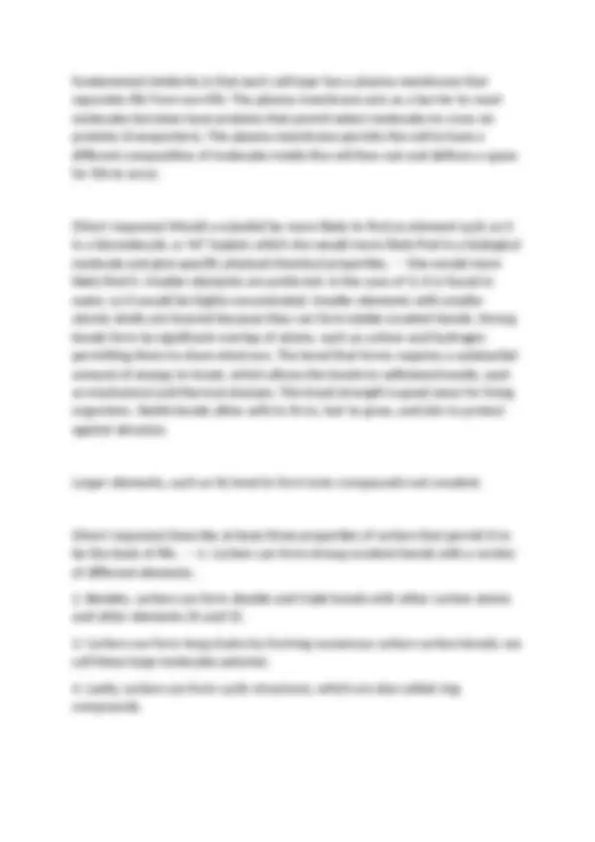





Study with the several resources on Docsity

Earn points by helping other students or get them with a premium plan


Prepare for your exams
Study with the several resources on Docsity

Earn points to download
Earn points by helping other students or get them with a premium plan
Community
Ask the community for help and clear up your study doubts
Discover the best universities in your country according to Docsity users
Free resources
Download our free guides on studying techniques, anxiety management strategies, and thesis advice from Docsity tutors
BIOCHEMISTRY FINAL EXAM - PORTAGE LEARNING MASTERY
Typology: Exams
1 / 6

This page cannot be seen from the preview
Don't miss anything!




True or False: According to the Module, a compound with a molecular mass of 1,000 g/mol is considered a macromolecule. - --False True or False: Biomolecules can have two or more different functional groups. - --True True or False: The following functional group is an amine. C2H5NH2 - --True True or False: In a eukaryotic cell, the organelles called peroxisomes serve the purpose of digesting macromolecules. - --False True or False: Carbon dioxide has a linear molecular shape AND has a bond angle of 109.5o. - --False Of the following, ____________ is not a property of carbon. Forming ionic bonds Forming cyclic structures Forming multiple bonds Forming bonds with oxygen Bonding in long chains - --Forming ionic bonds
Which of the following is an element not typically found in living organisms? Br Ca H S Na - --Br _____________ is a functional group found in carbohydrates. - --Alcohols The following functional group is an example of _________. Ch3COCH2CH3 - --Ketone A ___________ is a chemical formula that shows how the atoms of a molecule are bonded to one another. - --Kekule' structure A collection of two or more macromolecules uniting is called a _______. - -- Supramolecular Complex An organic compound with this structure, C=C, contains a ________ functional group. - --Alkene What element has been called the "super glue" of the chemical world? - --C What molecule is the most important for energy storage in cells? - --ATP
Which number would be closest to the approximate number of ribosomes in an E. coli cell? 9 38 400 1500 26,000 - --26, Which of the following would most likely have a cell wall? Monkey cells Snake cells Red algae cells Human red blood cells All of the above - --Red algae cells Eukaryotes have molecules that provide a protective structure. This network, which is found in all eukaryotes, is called the _____________. - --Cytoskeleton What is the molecule responsible for gout? - --Uric acid About how many different elements are found in living organisms? - -- (Short response) Explain the common similarity in all prokaryotic and eukaryotic cells. Explain the similarity in at least two sentences. - --The
fundamental similarity is that each cell type has a plasma membrane that separates life from non-life. The plasma membrane acts as a barrier to most molecules but does have proteins that permit select molecules to cross via proteins (transporters). The plasma membrane permits the cell to have a different composition of molecules inside the cell than out and defines a space for life to occur. (Short response) Would a scientist be more likely to find an element such as O in a biomolecule, or W? Explain which she would more likely find in a biological molecule and give specific physical/chemical properties. - --She would more likely find O. Smaller elements are preferred. In the case of O, it is found in water, so it would be highly concentrated. Smaller elements with smaller atomic shells are favored because they can form stable covalent bonds. Strong bonds form by significant overlap of atoms, such as carbon and hydrogen permitting them to share electrons. The bond that forms requires a substantial amount of energy to break, which allows the bonds to withstand insults, such as mechanical and thermal stresses. This bond strength is good news for living organisms. Stable bonds allow cells to form, hair to grow, and skin to protect against abrasion. Larger elements, such as W, tend to form ionic compounds-not covalent. (Short response) Describe at least three properties of carbon that permit it to be the basis of life. - --1. Carbon can form strong covalent bonds with a variety of different elements.